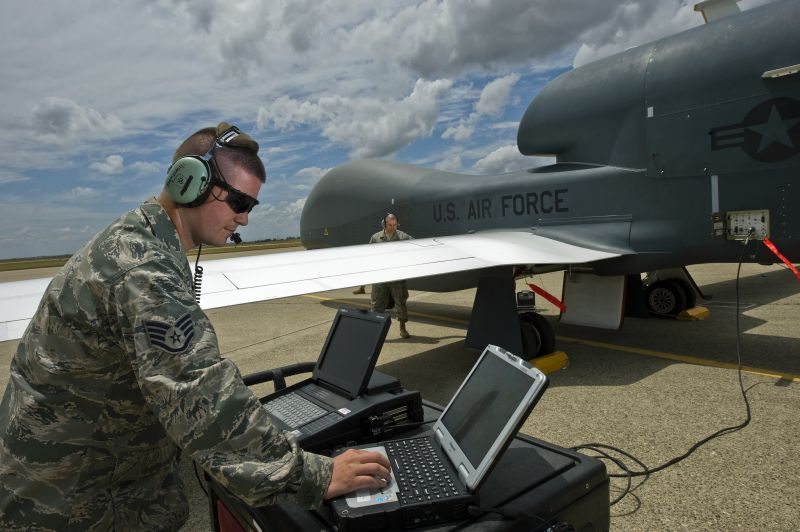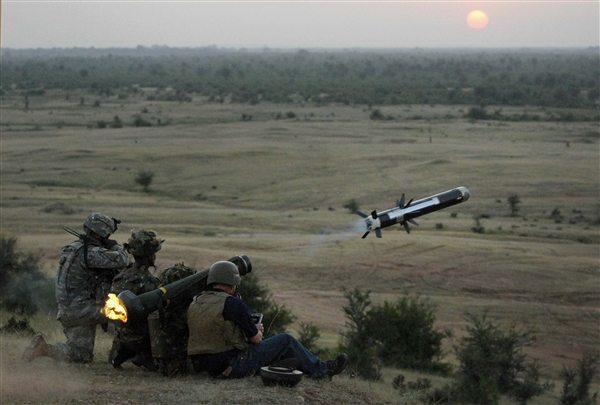Unmanned aerial vehicles will monitor military build-ups as well as missile and nuclear development programs, but they are likely to be criticized by Beijing and Pyongyang for contributing to regional tensions.
The US Air Force is to transfer two of its state-of-the-art Global Hawk drones to its air base at Misawa, in northern Japan, before the end of May and plans to start surveillance missions of areas to the west of mainland Japan.
The transfer of the US aircraft, from Andersen Air Force Base on the Pacific island of Guam, will also give the Japanese military an opportunity to see how the drones perform ahead of Japan’s military taking delivery of what will eventually be a unit of three of the UAVs from US aerospace firm Northrop Grumman in 2015.
Already widely used by the US in Afghanistan and Iraq, the Global Hawk will be tasked with keeping a watchful eye on the increasingly aggressive actions of the Chinese military in the East and South China seas, while also monitoring the activities of North Korea as it continues to develop its nuclear capabilities and the missile systems required to deliver them.
Experts say it is inevitable that both Beijing and Pyongyang will “make a fuss” about the drones
“This is designed to contribute to Japan’s national security and, as these are only surveillance aircraft, I really do not believe that any of our neighbors has a right to raise complaints,” Yoichi Shimada, a professor of international relations at Fukui Prefectural University, told DW.
‘Primitive’ North Korean drones
“North Korea has already been exposed for flying primitive drones into South Korean airspace, so Pyongyang cannot object to these defensive measures by Japan,” added Shimada.
“And as for China, their aircraft and naval vessels are constantly violating Japanese territorial areas, so they can have no reason to complain when we operate drones over our own territory,” he said.
But Professor Shimada agrees that it is inevitable that both Beijing and Pyongyang will “make a fuss.”
The timing of the deployment is significant as North Korea has repeatedly warned that it intends to carry out a “new type” of nuclear test at its Punggye-ri proving grounds. No date has been announced for the underground test, but satellite images indicate that a tunnel at the site has been completed and a tarpaulin is in place over the mouth of the tunnel to conceal the nuclear device as it is put into place.
Nuclear test monitoring
Should the Global Hawk drones be operational at Misawa Air Base before the test takes place, they are likely to be used to gather data on the test and the responses of the North Korean military – which will not be welcomed by Pyongyang.
And the North Korean regime appears to be getting its criticisms in early.
“The US claims that it is attaching importance to the relevant articles and paragraphs of the Armistice Agreement calling for respecting the airspace of the other party and stopping all aerial provocations,” the regime said in a statement carried by the state-run Korean Central News Agency. “But why is the US infiltrating strategic reconnaissance and other planes into the airspace of the DPRK so frequently and beclouding the blue sky above the inviolable Korean peninsula by flying aircraft for strategic nuclear strikes?”
China, equally, is unlikely to welcome added oversight of the activities of its forces in and around the disputed Senkaku Islands, which Japan controls but Beijing insists are sovereign Chinese territory. Further afield, Chinese naval units are engaged in ongoing clashes with Vietnamese vessels in disputed waters, part of what analysts say is effectively a territory grab by the most powerful military force in the region.
The Global Hawk has a wingspan of 40 meters and is slightly more than 14 meters from nose to tail. Equipped with advanced radar, imaging equipment and sensors, the unarmed UAV will operate at an altitude of around 18,000 meters for up to 30 hours. The take-off and landing maneuvers will be carried out by operators US military personnel at Misawa Air Base, but “pilots” at Beale Air Force Base in California will take over flight operations once the aircraft has reached a pre-determined height.
Shared intelligence
Japan’s Air Self-Defense Force plans to operate its own drones from an adjoining air base and the two nations are expected to share the intelligence they gather.
“The basic fact is that these aircraft are defensive and the US and Japanese UAVs will be used for surveillance purposes, which means there is no legitimate reason for another nation to complain,” Masafumi Iida, a China military analyst at the National Institute of Defense Studies in Tokyo, told DW.
Security topped President Obama’s agenda during his recent visit to Japan
He added that while other drones are designed to be offensive platforms and have been used to carry out remote-controlled strikes against terrorist targets in Afghanistan, Pakistan, Yemen and other countries, Japan has not as yet expressed an interest in purchasing those variants.
Shimada is firmly of the belief that Japan should arm itself with an offensive drone capability.
“I see no reason why we should not deploy them, along with the surveillance UAVs,” he said. “China is constantly escalating its aggressive moves – against the Philippines and Vietnam as well as against Japan – and I think it is completely normal for countries in the region to take countermeasures.”











